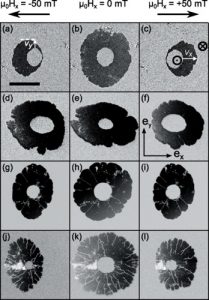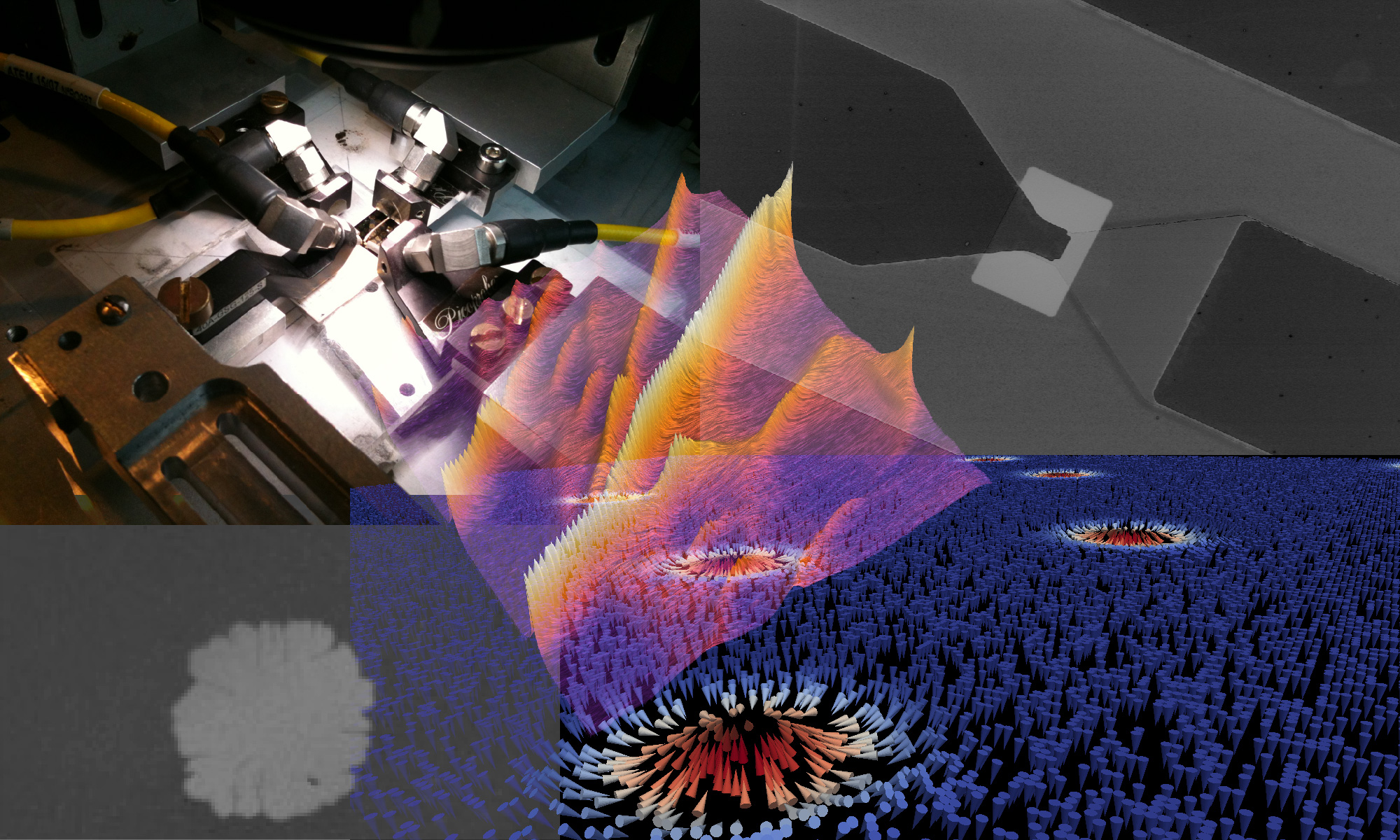Domain walls represent boundaries between magnetic domains and exhibit nontrivial dynamics. In ultrathin ferromagnetic films, such as Ta/CoFeB (1 nm)/MgO, domain walls have widths down to tens of nanometres and are therefore interesting for potential applications in information storage where high area densities are sought. Understanding the nature of the domain walls on the nanoscale and how they propagate under applied fields and currents are therefore important questions for both fundamental and technological reasons.
Using Kerr microscopy and simulations, the NOMADE group has brought to light a number of unexpected results on this topic. We showed that the depinning field in Ta/CoFeB/MgO systems can be in the range of a few mT, which is surprisingly low compared with ultrathin Co films where depinning fields can be one to two orders of magnitude larger. In collaboration with colleagues at the National Institute for Materials Science, Japan, we have also shown that the presence of certain heavy metal buffer layers, such as TaN, Hf, and W, can lead to chirality-dependent propagation as a result of the Dzyaloshinskii-Moriya interaction (DMI).

Our results also show that the values of the DMI extracted from domain wall motion in the creep regime can differ to those obtained using Brillouin light scattering and nitrogen-vacancy-centre nanomagnetometry, which raises interesting questions on the relevant length scales over which the DMI acts.
In collaboration with the research group of V. Jacques at the Laboratoire Charles Coulomb (Montpellier), we showed that laser-induced heating can affect depinning rates and allow domain walls to be dragged along ultrathin film track. This phenomenon allows unprecedented access to the local disorder energy landscape seen by the domain wall on the nanometre scale.
Further reading:
- C. Burrowes, N. Vernier, J.-P. Adam, L. Herrera-Diez, K. Garcia, I. Barisic, G. Agnus, S. Eimer, J.-V. Kim, T. Devolder, A. Lamperti, R. Mantovan, B. Ockert, E. E. Fullerton, and D. Ravelosona, Appl. Phys. Lett. 103, 182401 (2013).
- J.-P. Tetienne, T. Hingant, J.-V. Kim, L. Herrera Diez, J.-P. Adam, K. Garcia, J.-F. Roch, S. Rohart, A. Thiaville, D. Ravelosona & V. Jacques, Science 334, 1366 (2014).
- I. Gross, L. J. Martinez, J.-P. Tetienne, T. Hingant, J.-F. Roch, K. Garcia, R. Soucaille, J.-P. Adam, J.-V. Kim, S. Rohart, A. Thiaville, J. Torrejon, M. Hayashi, and V. Jacques, Phys. Rev. B 94, 064413 (2016).
- R. Soucaille, M. Belmeguenai, J. Torrejon, J.-V. Kim, T. Devolder, Y. Roussigné, S.-M. Chérif, A. A. Stashkevich, M. Hayashi, and J.-P. Adam, Phys. Rev. B 94, 104431 (2016).
